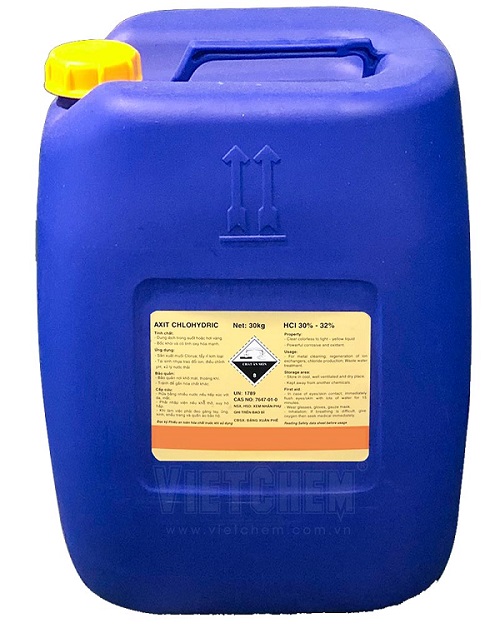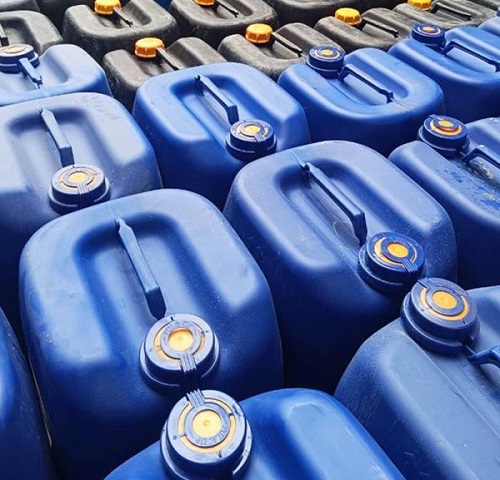Hydrochloric Acid (HCl) 32%-35%
1. Introduction
Hydrochloric Acid (HCl) is a strong inorganic acid known for its high corrosiveness. Despite its hazardous nature, HCl is essential in various industrial processes and everyday applications.
2. Product Information
- Product Name: Hydrochloric Acid
- Other Names: Chloric acid, Muriatic acid, Hydrogen chloride, Fuming acid
- Chemical Formula: HCl 32%-35%
- CAS Number: 7647-01-0
- Concentration: 32%-35%
- Origin: Vietnam
3. Properties
Physical Properties
- A clear or pale yellow liquid.
- Fully soluble in water.
- A strong inorganic acid that can cause burns and dissolve most common metals to form metal chlorides.
Chemical Properties
- With metals: Releases hydrogen gas and forms metal chlorides.
- With bases: Forms chlorides and water.
- With weaker anion salts: Produces new salts and acids.
4. Specifications
- Concentration: ≥ 35%
- Iron (Fe): ≤ 5.0 ppm
- Sulfates (SO₄²⁻): ≤ 200.0 ppm
- Free Chlorine (Cl₂): ≤ 30 ppm
5. Applications
- pH Neutralization and Wastewater Treatment: Primarily used to neutralize pH in wastewater treatment and to remove Ag+ ions in plating wastewater.
- Inorganic Compound Production: Used to produce inorganic compounds such as ferric chloride, polyaluminium chloride (PAC), calcium chloride, and nickel chloride.
- Organic Compound Production: Utilized in the production of organic compounds like dichloroethane, vinyl chloride, and bisphenol A, which are used in making PVC, activated carbon, and pharmaceuticals.
- Water Treatment: Adjusts pH in drinking water, swimming pools, and industrial wastewater treatment.
- Cleaning: Cleans glass bottles, water pipes, and removes stains from tiles.
- Steel Pickling: At an 18% concentration, it is used in steel pickling to remove rust from carbon steel before galvanization or electroplating.
- Other Industries: Also used in food processing, mineral extraction, and the chemical industry.
6. Storage
- Use stainless steel, plastic, or composite equipment for storage.
- Store in a dry, cool, and well-ventilated area.
- Avoid contact with water.
7. Safety and Handling
- Protective Equipment: Wear full protective gear, including boots, rubber gloves, masks, safety goggles, and face shields.
- First Aid: In case of skin contact, rinse immediately with plenty of water and seek medical attention if necessary.
- Spill Management: Clean up spills with water.
- Storage Precautions: Do not store in direct sunlight or with flammable materials. Ensure the storage floor is acid-resistant.






